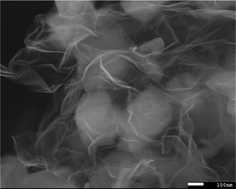Graphene wrapped LiFePO4/C composites as cathode materials for Li-ion batteries with enhanced rate capability
Abstract
To reduce the reaction time, electrical energy consumption, and cost, LiFePO4/C/

* Corresponding authors
a
New Energy and Materials Laboratory, Department of Chemistry & Shanghai Key Laboratory of Molecular Catalysis and Innovative Materials, Fudan University, Shanghai 200433, China
E-mail:
wuyp@fudan.edu.cn
Fax: +86 215566 4223
Tel: +86 6564 2141
b
Institute for Superconducting and Electronic Materials, University of Wollongong, Australia
E-mail:
jiazhao@uow.edu.au
Fax: +61-2-42985731
Tel: +61-2-42981478
c School of Mechanical, Materials and Mechatronic Engineering, University of Wollongong, NSW 2522, Australia
To reduce the reaction time, electrical energy consumption, and cost, LiFePO4/C/

 Please wait while we load your content...
Something went wrong. Try again?
Please wait while we load your content...
Something went wrong. Try again?
Y. Shi, S. Chou, J. Wang, D. Wexler, H. Li, H. Liu and Y. Wu, J. Mater. Chem., 2012, 22, 16465 DOI: 10.1039/C2JM32649C
To request permission to reproduce material from this article, please go to the Copyright Clearance Center request page.
If you are an author contributing to an RSC publication, you do not need to request permission provided correct acknowledgement is given.
If you are the author of this article, you do not need to request permission to reproduce figures and diagrams provided correct acknowledgement is given. If you want to reproduce the whole article in a third-party publication (excluding your thesis/dissertation for which permission is not required) please go to the Copyright Clearance Center request page.
Read more about how to correctly acknowledge RSC content.
 Fetching data from CrossRef.
Fetching data from CrossRef.
This may take some time to load.
Loading related content
